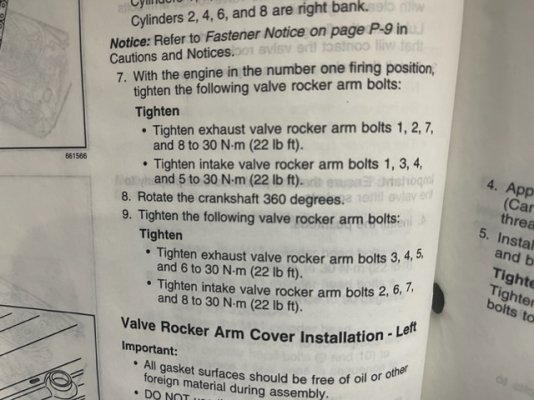Hi, I have an 2007 Tahoe with 180,000 miles. As common I had a lifter/cam issue. I perform the AFM Delete (change all 16 normal lifters and regular camshaft and re-program to dissconect the AFM on the computer).
I been having low pressure problems . I already change the oil pump and double checked the O ring on the pump.
When is cold the pressure goes over 40 (normal) and the engine sounds great. But when it warms up the oil drops under 20 and the lifters start to make noise.
Any help will be appreciated.
Others can do better at specific diagnosis, here are a few general thoughts.Hi, I have an 2007 Tahoe with 180,000 miles. As common I had a lifter/cam issue. I perform the AFM Delete (change all 16 normal lifters and regular camshaft and re-program to dissconect the AFM on the computer).
I been having low pressure problems . I already change the oil pump and double checked the O ring on the pump.
When is cold the pressure goes over 40 (normal) and the engine sounds great. But when it warms up the oil drops under 20 and the lifters start to make noise.
Any help will be appreciated.
Lifter quality is absolutely critical - GM or Delphi, or specific aftermarket brands recommended by others. It's not a place to cut corners, same with trays. I just bought a set of the GM lifters (12499225), and it was about $400 for the set from GM Parts Giant - money well spent.
I agree with others, go with 5W-30 oil (or whatever is specified on the filler cap). An oil change to the correct viscosity is the first thing I'd do.
A common failure point with AFM engines is the oil pressure relief valve. If you didn't have pressure problems before AFM delete, it's probably ok. Some guys replace it with a plug after AFM delete. If you pull the oil pan again, you should replace the valve if you don't plug the port - it's a $10 part (GM 12608835).
You didn't mention replacing the VLOM with a plain valley cover. I don't know if leaving the VLOM in place will definitely cause a problem, but it's SOP to replace it with AFM delete. The part is cheap (about $50-60 if you use the L92 version with PCV valve in the valve cover).
Oil pump may vary with block material. Iron blocks (probably LY5, assuming you have a 5.3) get the Melling M295. Aluminum blocks (LC9) need the higher volume M365 with AFM. Some people go back to M295 after DoD delete, but the Al blocks have looser clearances around the lifters and need more oil. Check here and call Melling to confirm the right choice. GM is now shipping these Melling pumps as OEM replacement parts.
Several different o-rings were used on the oil suction tube. For LY5/LC9, the correct one is probably red/orange (GM 12584922). Aftermarket suppliers may use different colors. Make sure you used the right one. If you drop the oil pan again, add a hold-down bolt (Sac City Corvette) or girdle (Improved Racing, others) to secure the pickup tube to the oil pump.
Good luck, and keep us posted!

